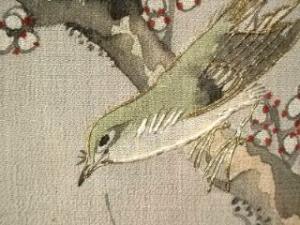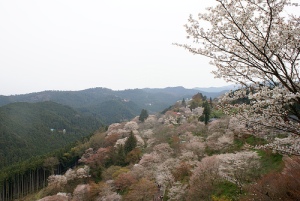 This may been the finest piece of marketing ever to grace my Facebook sidebar.
This may been the finest piece of marketing ever to grace my Facebook sidebar.
Filed under: Animals: Adorable and/or Disturbing, Art, Music, Tech & The Internet | Tagged: advertising, internet, they might be giants | Leave a comment »
 This may been the finest piece of marketing ever to grace my Facebook sidebar.
This may been the finest piece of marketing ever to grace my Facebook sidebar.
Filed under: Animals: Adorable and/or Disturbing, Art, Music, Tech & The Internet | Tagged: advertising, internet, they might be giants | Leave a comment »
Submitted without comment:
Filed under: Animals: Adorable and/or Disturbing, Television | Tagged: japan, Otani Ikue, pikachu, pokemon, voice acting | Leave a comment »
What happens when you combine Japanese pop artist Takashi Murakami, American actress Kirsten Dunst, and vowelless director McG over a classic ’80s hit from one of my favorite bands? Would you believe it’s this?
(Warning: contains images not safe for work or family.)
(via BoingBoing, who just referred to “Murakami” in their post, and thus had me thinking they meant Haruki Murakami, which made even less sense.)
I’m not really sure how I feel about this video. Dunst’s cover doesn’t bring a lot musically, but I don’t think that’s the point. The trio seems to have set out to make something more like a short film, but it has no sense of narrative or flow. Magical Girl Super Kirtsen doesn’t have a consistent character–in one shot, she seems lost and outside of reality, in the next she’s flirting with the camera like we’re real and everyone else is outside. There’s some cultural statement lurking under the surface–not just about being an outsider, but about how we relate to pop culture, how foreigners can become engrossed in what is commonplace to locals (BoingBoing talked a bit about this recently), but the quick-cut, non-linear film never manages to get to the point. I give it an A for concept, C for execution.
For contrast, here’s what an actual Vapors video looks like:
Filed under: Film, Music | Tagged: japan, kirsten dunst, magical girl, mcg, music video, pop culture, rock and roll, takashi murakami, the vapors, turning japanese | Leave a comment »
Sorry, guys, it’s been an off week here at The Elephant–a lot on my mind and nothing on the page. Here’s some highlights from double-guitar virtuoso Zack Kim to keep the blog from blowing away:
Here’s his full youtube stream, I think there’s something for everyone in there. See you all next week!
Filed under: Gaming, Music | Tagged: disney, final fantasy, music video, simpsons, snow white, sting, the police, zack kim | Leave a comment »
This is making the rounds (BoingBoing, Neatorama, Morgan [hi, Morgan])), and you know how I love a good bandwagon:
Filed under: Film | Tagged: david lynch, disney, goofy, mashup | Leave a comment »
Back in October (when the Elephant was hibernating), Pink Tentacle posted a set of wonderful animated stereoviews by early Japanese photographer T. Enami, including this one of a handful of rikishi displaying their kesho-mawashi:

(Click through to check out more of Enami's photographs, and other shots of vintage sumo and other scenes of old Japan, from Flickr user Okinawa Soba.)
It’s a fascinating combination of stillness and motion, depth, and not-quite-natural color. Also, the dude on the left moved during the exposure, dooming him to an eternity of ghostly half-existence. Scary.
For our edification, I also decided to do a little ImageReady work so we could check out the embroidery in more detail, which is not a phrase I ever expected to type:
Filed under: Art, Sumo | Tagged: japan, kesho-mawashi, photography, pink tentacle, stereoview, sumo wrestling, t. enami | Leave a comment »
I think this is my favorite Monkees song. I’m probably the only one here who has a favorite Monkees song, huh? I mean, if we don’t count Daydream Believer?*
(Video is from an episode of the TV series, thus it is even more nonsensical than it might otherwise be. Also, Mickey’s little scat bit is looped once, presumably to make room for antics.)
( * I originally mistyped this as “Daybream Believer”. I’m gonna put an attribution/share-alike license on that phrase, if you guys feel like using it for like, a children’s cartoon or something.)
Filed under: Music | Tagged: bream, creative commons, daybream believer, monkees, music video, randy scouse git, rock and roll, rude terms for british people | Leave a comment »
 I think just the act of posting that last translation has made me dislike it. I’m sending Spring I, #3 back to the drawing board. Don’t look at it any more. We’re moving on:
I think just the act of posting that last translation has made me dislike it. I’m sending Spring I, #3 back to the drawing board. Don’t look at it any more. We’re moving on:
梅がえに
きゐるうぐひす
はるかけて
なけどもいまだ
雪はふりつつ
the warbler
back in the branches
of my plum tree,
singing in the spring
even as the snow falls
Japanese poetry often lacks a sense of “speaker”, due in part to the structure of the language itself. Using “my” inserts a presence not expressly there in the original, but I find it shrinks and personalizes the scope of the poem. “my plum tree” has a softer, smaller feel than “the plum tree”, pulling the scene of the poem into a familiar back yard, rather than a vague, open space-with-a-plum-tree. Still not committed to the punctuation here–I played with dashes and different use of commas, even a colon, but nothing stuck, so I went with this one-comma version.
As always, comments and criticisms welcome!
Filed under: Poetry, Writing | Tagged: japan, kokinshu, spring, translation, uguisu | Leave a comment »
 In an effort a higher echelon of dorkdom (Nerdvana?), I have been devoting a portion of my free time to the translation of classical Japanese poetry. The following tanka–a short poetic form which dominated Japanese culture for quite a long time–is from the Kokinshu, specifically the first book of spring verses. I do not claim that it is perfect, or even necessarily done, but it is the first one I think I’ve gotten to the point of “decent”.
In an effort a higher echelon of dorkdom (Nerdvana?), I have been devoting a portion of my free time to the translation of classical Japanese poetry. The following tanka–a short poetic form which dominated Japanese culture for quite a long time–is from the Kokinshu, specifically the first book of spring verses. I do not claim that it is perfect, or even necessarily done, but it is the first one I think I’ve gotten to the point of “decent”.
Here we go:
春霞
たてるやいづこ
みよしのの
よしのの山に
雪はふりつつ
oh where
do the spring mists rise?
here in fair Yoshino,
in the mountains of Yoshino,
snow keeps coming down
I’m still a bit uncomfortable with the “oh where”, it’s a little melodramatic… Thoughts, comments, and criticisms are welcome.
Filed under: Poetry, Writing | Tagged: japan, kokinshu, spring, translation, yoshino | 1 Comment »
 Fifth of February, Two-Thousand and Ten: Rene Engstrom’s beautiful, sad, funny, disturbing web-opus, Anders Loves Maria, has ended. If you haven’t been reading it, for the love of God, do not jump straight to the end. Start here (and be aware that it is not safe for work, not safe for kids, not safe to read around your parents–sex, nudity, bad decisions, pain, and heartbreak abound).
Fifth of February, Two-Thousand and Ten: Rene Engstrom’s beautiful, sad, funny, disturbing web-opus, Anders Loves Maria, has ended. If you haven’t been reading it, for the love of God, do not jump straight to the end. Start here (and be aware that it is not safe for work, not safe for kids, not safe to read around your parents–sex, nudity, bad decisions, pain, and heartbreak abound).
Much could be said about Anders Loves Maria. Much has been said. All I will add right now is this: it is a mark of pure artistry that, upon finishing the strip, the simple act of looking back at the title re-contextualizes everything, and makes you want to just cry (more so than you did just a second before).
Kudos, Rene.
Filed under: Comics | Tagged: anders loves maria, rene engstrom, sweden, webcomics | Leave a comment »